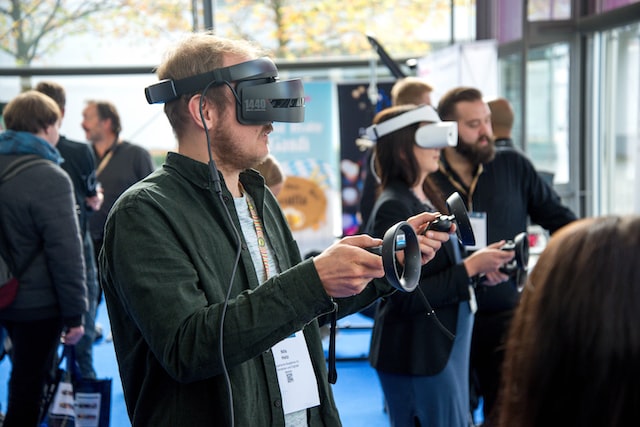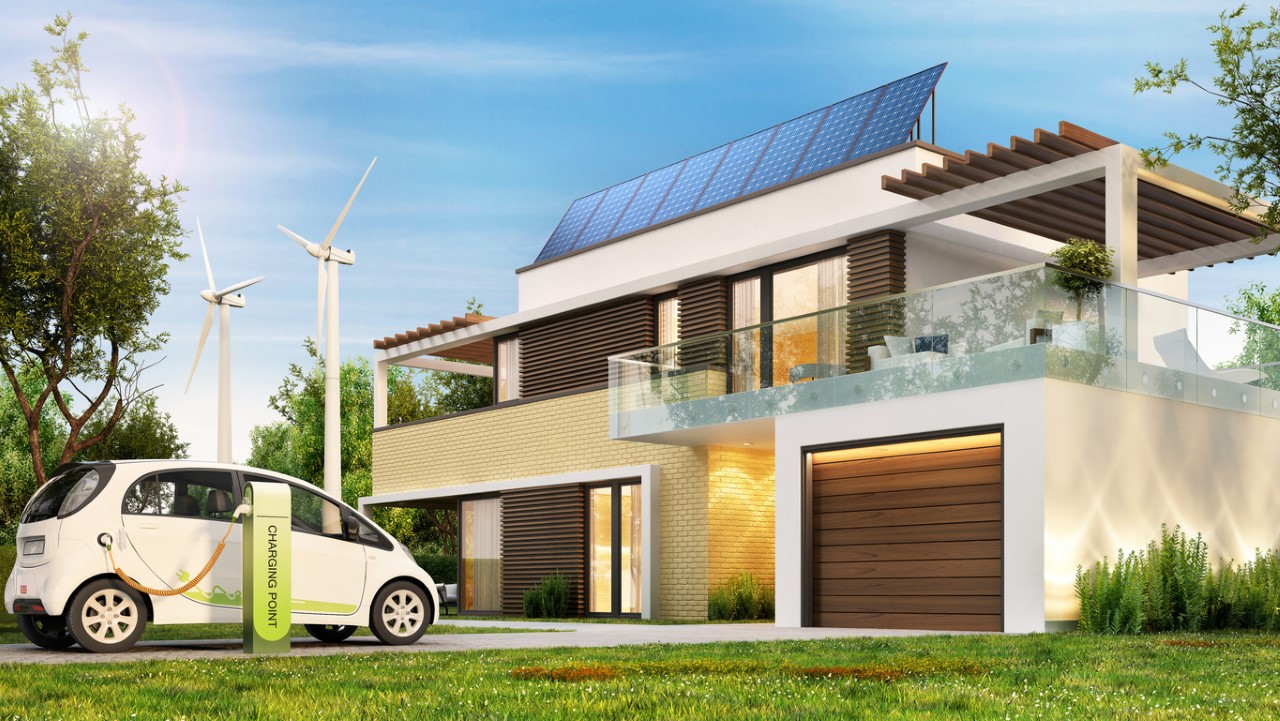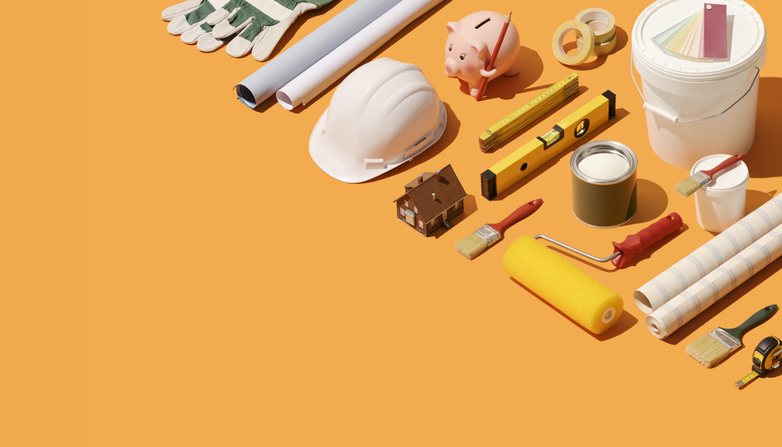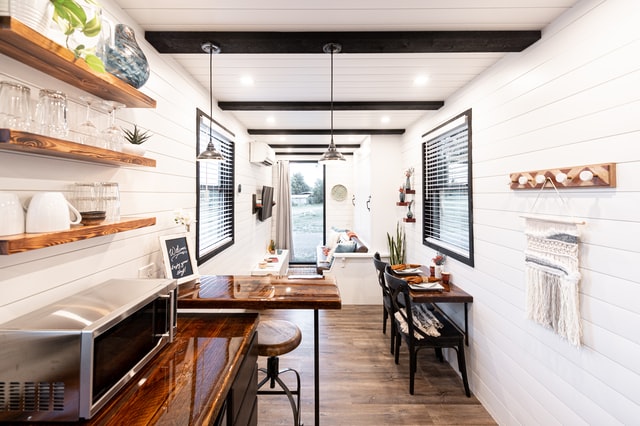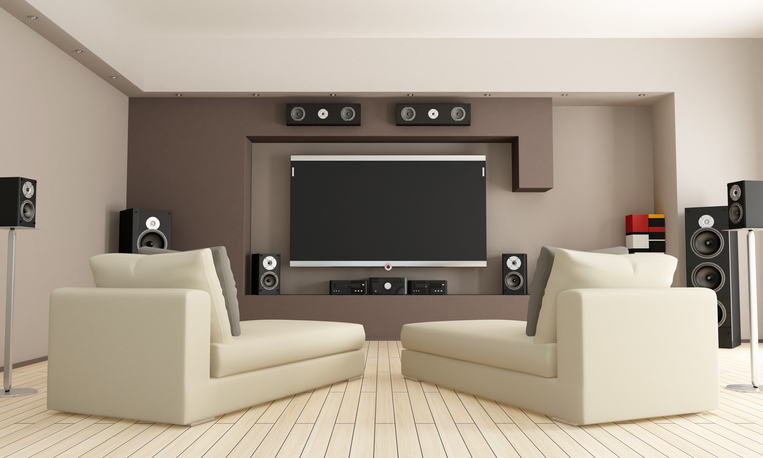You’ve probably heard of VR (virtual reality), especially in the form of video games. AR (augmented reality) is lesser known but just as relevant. Both transform your reality by allowing you to experience a digital object or space and have been extremely beneficial for the construction, interior design, and home improvement industries.
These industries are using AR and VR technology in their smartphone apps, so you can build floor plans, measure rooms, and place potential new products inside your current space to see how they look. Imagine you plan to buy a couch but aren’t sure if it will fit or match your aesthetic. Your app measures the room before placing the sofa inside it. No need to drag out that measuring tape to do it manually; instead, AR and VR technology has your back.
This immersive shopping experience has led to a drastic drop in reported return rates. Apps also help create floor plans of a home or even advise on how to utilize a space best. Augmented and virtual reality is a major tool for home improvement, and people love how interactive and straightforward it is.
Table of Contents:
- Uses of VR and 3D visualization services in the construction industry
- Construction & virtual reality – where to start?
- Recommendations to craft personalized interiors
- AR tools to make the pros even more creative
- Useful apps: the future of AR-powered home decoration?
- Using AR to furnish customers with unforgettable experiences
- Home insurance for AR & VR interior design
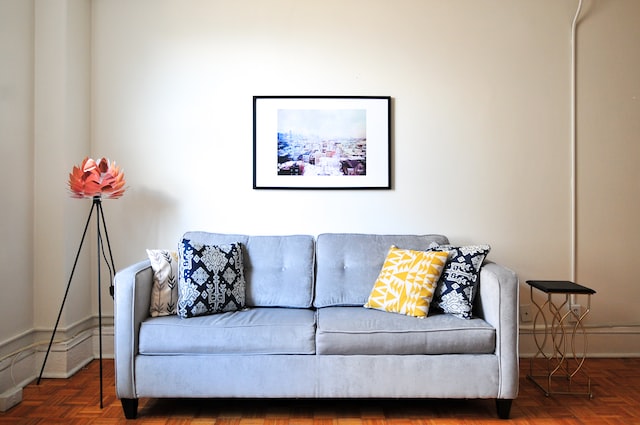
Uses of VR and 3D visualization services in the construction industry
The construction industry has found that VR and AR technologies improve their industry in several ways. From designing to marketing, renovating, or even training, this industry leverages AR to show people its products and renovations before construction begins.
Design pitch
Architects and designers have found altered realities to be extremely useful in showing clients their intentions. These industries have always relied on various forms of concept art (drawings or 3D models on computers) to showcase plans to a client. Now, with the help of 3D rendering services, they can place the design inside the room where the customer wants it.
Using this and similar technology that goes into Google Street View, clients can look at the potential designs from all angles within the room. While VR gaming requires an expensive headset, the same isn’t true for these VR and AR designs. Most computers can handle it, and soon smartphones will too. These new realities give customers more confidence than ever in purchasing.
Renovation projects
VR technology is also creating significant advancements in home improvement. Companies are using it to map out job sites and troubleshoot logistics early on, such as ensuring large items (like pianos and bathtubs) can fit in a room or figuring out how to maneuver heavy machinery up large hills. It can also walk people through a job site so they can see the progress or envision what it will look like once built.
Safety and training
It’s easier than ever to allow people to train in a virtual world. One place this makes a significant difference is in forklift training for warehouses. By placing people in virtual forklifts, they can go through a trial-and-error learning process safely without damaging themselves or the machines. This training applies across several sectors and can be used to train those in remote areas effectively.
Marketing tools
VR and AR are popular tools in real estate marketing because they allow users to put themselves in their potential new homes. For any industry in sales, showing a customer the most accurate depiction of their large purchases increases sales and customer satisfaction. Fewer people make returns by filing complaints if they’ve seen their product in augmented reality first.
In this rapidly evolving landscape, the seamless integration of VR and AR with high-quality photography is revolutionizing customer experiences. Through this amalgamation, potential buyers or clients can virtually step inside spaces, feeling the warmth of a room or visualizing their lives within these walls. This experience is particularly invaluable in real estate, where the ambiance and feel of a home are as crucial as its structural aspects. This enriched experience not only engages customers on a visual level but also taps into their emotions, creating a lasting impression and fostering a stronger connection to the property or product. By leveraging this powerful combination, businesses can transcend traditional boundaries, offering an immersive experience that truly captivates and convinces their clientele.
Incorporating the artistic touch into these augmented realities can significantly enhance the presentation and appeal of the final output. That’s where the expertise of a professional comes into play. While technology can map out spaces and provide a 3D visualization, the texture, lighting, and perspective captured by a professional photographer can inject a sense of realism and emotional connection to these visualizations. Especially in the realm of real estate or interior design, the ambiance created by the right photo can evoke a sense of home, luxury, or comfort, transforming the digital model from just a space to a potential dream home. Collaborating with photographers ensures that VR and AR presentations are not only technically accurate but also aesthetically pleasing, resonating with the target audience on a deeper level.
Construction & virtual reality – where to start?

VR is becoming more valuable as the industry grows, and it’s wise to consider how your business can improve. VR can help improve many things in the construction industry — from training to on-site planning and troubleshooting to design or sales.
Is VR development expensive?
VR can be expensive to develop. However, this high price can come with amazing benefits in the long term — such as increased customer satisfaction, fewer on-the-job accidents, troubleshooting problem areas early, and higher sales rates. If you’re considering developing VR for your business needs, remember you don’t need to go all-in immediately to make a big difference. Creating a 360-degree video is more cost-effective than a full training suite. Not everything in VR needs to be a fully enjoyable 3D game played with a headset. By tailoring your needs to your budget, you can enter the VR space with the confidence and wisdom needed to level up your business.
Improving communication with virtual reality in construction
VR improves communication in all construction industry sectors and should be your first focus when getting started. Using VR in concept and design, you can effectively communicate physical attributes and the overall job before boots hit the ground. Your clients will have a chance to weigh in, and you’ll solve a lot of headaches. Teams can discuss their progress and walk each other through their visions. Your project managers can use VR to manage jobs from anywhere they need to be, helping your company manage multiple projects smoothly.
Integrating modern technology into construction processes not only enhances communication but also efficiency. By collaborating with an internet specialist, construction firms can optimize their VR experiences, ensuring seamless online connectivity and the rapid transfer of data. This, in turn, allows real-time adjustments and approvals, fostering a synergized approach between designers, builders, and clients. With specialists fine-tuning the digital experience, VR’s true potential in the construction realm can be fully harnessed.
The advancement in technology also paves the way for smarter, more efficient administrative processes, such as the ability to automate data entry. In the construction industry, where every detail matters, automating the input and management of data reduces the likelihood of human error, streamlines the flow of information, and saves valuable time. This automation can be particularly beneficial in managing project timelines, budgeting, and resource allocation. By integrating software that can accurately capture and process project data, construction firms can focus more on strategic planning and less on tedious paperwork, thus boosting overall productivity and accuracy in every project.
Recommendations to Craft Personalized Interiors
Personalizing your living area can transform a space. You can shop for furniture, paint, wall décor, and even plants with AR. Without leaving the house to bring your vision to life, you’ll know it’s what you want before spending a dime.
Virtual staging, an application of augmented reality (AR), is revolutionizing how homes are decorated and furnished. With virtual staging, homeowners, interior designers, and real estate professionals can visualize and experiment with different furniture, decor, and design elements in a virtual representation of a space. This cost-effective and time-saving approach allows for efficient decision-making and flexibility in exploring design possibilities.
Incorporating technology into design practices, we see a blend of aesthetic appeal and environmental mindfulness. Traditional staging often involves excess, with items purchased, briefly showcased, then either stored or discarded. This can lead to environmental concerns from manufacturing to disposal. On the other hand, going digital reduces these environmental footprints, making the process more sustainable. And it doesn’t stop at being green; the digital platform offers a chance to effortlessly blend global design elements, reflecting diverse tastes and cultures. As we move forward, it’s clear that the intersection of sustainability and technology will significantly shape the design landscape.
Virtual staging also provides a realistic visual representation of how a space could look with different choices, helping homeowners and designers make informed decisions and increasing customer satisfaction. Real estate professionals are leveraging virtual staging to create visually appealing virtual tours or photographs that attract potential buyers by showcasing furnished empty rooms. With the availability of AR-powered apps, virtual staging is set to become a mainstream practice, transforming how we decorate and furnish our homes.
Custom furniture
One of the coolest ways VR and AR can assist your home is by creating custom furniture. Not only can you choose the aspects of your furniture to suit your wants (like size, material type, and color), but you can also place it inside your home through AR. From there, you can make changes to those aspects and make sure your custom furniture is perfect in your space.
The integration of augmented reality boosts manufacturing processes, especially in the realm of custom furniture. This innovative technology allows manufacturers to visualize the final product in a real-world setting, ensuring that the design, dimensions, and aesthetics align perfectly with the customer’s expectations and space. Augmented reality facilitates a more collaborative and interactive design process, where adjustments can be made in real-time, significantly reducing errors and the need for costly prototypes.
Custom art for your walls
While you’re visualizing your space via AR and VR, this is the ideal time to shop for art. One of the most challenging aspects of purchasing art is visualizing the work on your walls. With AR, you don’t have to dream it; you can see it yourself on your device. You might find that the colors clash unexpectedly or aren’t the correct size. Or, you might try a few different art pieces in that spot and be pleasantly surprised at which you like best.
Add flowers or greens
Art and furniture aren’t the only ways to decorate your interiors through digital innovation. You can do the same for greenery — from potted plants to flowers. This method is a great way to shop for different styles and sizes of plants, and you can also develop your vision.
Plants are great for indoor décor, as they add vibrant color to any space while promoting relaxation and calm. Many plants range from easy to difficult in terms of care. If your thumb isn’t green, it’s worth researching before purchasing that perfect plant.
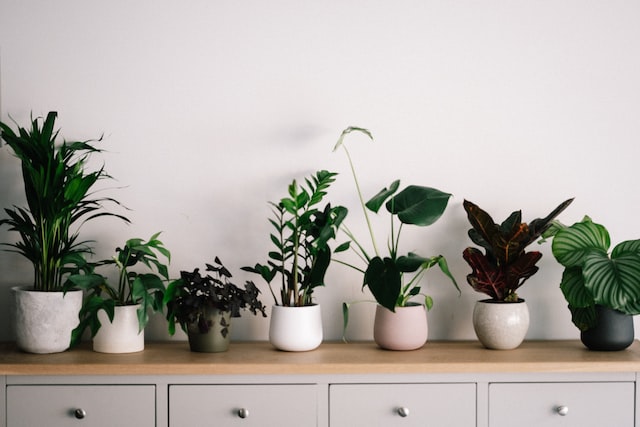
AR tools to make the pros even more creative
Now that your eyes are open to the power of this emerging technology, you’re probably thinking about how to make it work for yourself. There’s a variety of apps and tools that can help you and your business enter the AR space.
How can we get access to those apps?
Whether you work in construction, design, architecture, or marketing, AR can significantly help your industry. The best way to gain access is to contact VR consulting firms to discuss your vision and needs. A consultation with a few of these companies will give you an idea of what to budget for your AR or VR needs and what you can expect as you grow your business. Accomplishing your needs may vary in complexity, so be sure to ask what they recommend and why.
How does AR empower the highest levels of the home decor industry?
If you’re in the home design and decorating business, you’re familiar with CAD packages (computer-aided design and drafting) and may have been using them to bring your visions to life. Now, different apps like RoomSketcher combine the features of the best CAD software with the simplicity of a smartphone app. Roomle pushes this innovation further, using AR tools to automatically map room dimensions, so you can create a design for your space. As a result, everyone from rookies to high-level professionals can create detailed floor plans with minimal time and effort.
AR’s impact differs across customers and brands
VR has been making significant strides over the last decade. Thanks mainly to the gaming industry, which brings unique interactive experiences to people’s homes and provides a fantastic source for virtual tours, VR and AR tools cover an array of uses. Different clients and brands will have different needs, but AR’s comprehensive uses make it a diverse tool to be employed across several industries and sectors — all with positive results.
Useful apps: The future of AR-powered home decoration?
Join the foray into AR with these helpful apps:
- IKEA place: When this app launched, it showed the world what augmented reality could do for customers and brands. It’s an excellent app that allows you to place all your potential IKEA furnishings into your room. This app is so effective it’s spurred many industries to adopt AR.
- Houzz: This is the perfect app for interior design. With it, you can view your room in 3D, have the program act like a digital assistant, and alter the space. Professionals use this app for home design ideas, shopping for materials, and finding experts.
- ARki: Import 3D renderings from CAD software and see them on location through AR.
- Dulux visualizer: If you want to paint your walls, this app will do it virtually, so you can find the perfect color.
- DecorMatters: Not only can you place decorations in a room, you can also design the entire interior of your room and look up store recommendations.
- RoomScan pro: An excellent app that creates 2D or 3D floor plans and blueprints.
- MagicPlan: An app to help you create room floor plans.
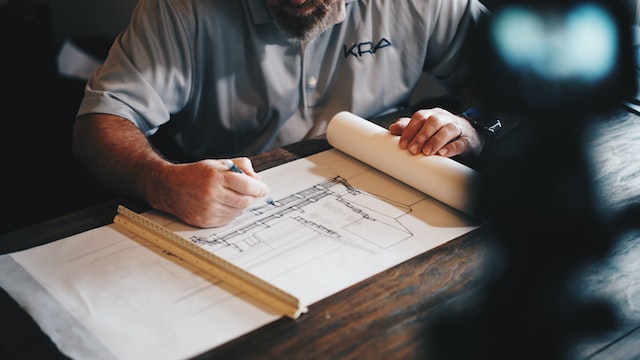
Using AR to furnish customers with unforgettable experiences
AR has all but taken over most steps of the design business, and it’s only growing with time. You can fully customize your AR experience from start to finish. In architecture, your planning will become a real, interactive work that customers can fully understand. You’ll map entire locations, and customers can walk through them like a showroom while seeing the space via their devices.
You have enhanced visualizers to showcase your work, and you can also use AR to train others and help wishy-washy customers land on a decision they love. AR provides customers with unforgettable experiences, as seen by increased retention rates and customer satisfaction, as well as reduced rates of returns and complaints.
Home insurance for AR & VR interior design
Your home is a significant investment, and safeguarding it is just as important as the exciting process of decorating and designing. Home insurance provides a safety net in unexpected events like natural disasters, theft, or accidents. By securing your investment, you ensure that the hard work and creativity you’ve put into crafting your personalized space are protected.
When you use AR and VR to visualize your interior design and select valuable items for your home, consider contacting reputable insurance providers to discuss your coverage options for those items. They can help you tailor a policy that suits your needs and the unique features of your home. With the right insurance, you can fully enjoy the immersive experiences that AR and VR bring to your home, knowing that you’re safeguarding your investments in style and technology.
Construction has also significantly benefited from AR for its end users. Potential buyers and investors can walk the breadth of the finished project digitally before laying the foundation. So much of home marketing is visualization, and the ability to provide something a customer can see and interact with in 3D boosts satisfaction. Your customers will love experiencing your work in AR, and soon you’ll wonder how you ever lived without it.
